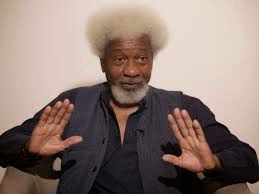Japan Earthquake: Death Toll Rises To 73
 |
At least 73 people are now known to
have died in the quake that hit Japan on New Year’s Day as search for more
bodies continues at Ishikawa, the epicentre and other parts affected by the
quake.
According to a spokesperson for
Ishikawa Prefecture, an unknown number remain missing, as authorities continue
searching for those trapped under rubble or in cut-off areas.
Chief Cabinet Secretary Yoshimasa
Hayashi yesterday said 70 people had been rescued overnight and officials were
rushing to meet a request to deploy rescue dogs. The number of missing people
was still being counted, he said.
The quake shook the Noto Peninsula,
located on the western, more rural side of central Japan, triggering tsunami
alerts, fires and collapsed buildings. Photos across the region showed entire
multi-story buildings had fallen on their side, burned structures and rubble
where houses once stood.
Infrastructure damage remains a major
challenge, Hayashi said Wednesday. Roads in and around the peninsula are
blocked, though some routes are being cleared for vehicles to deliver food and
essentials to the impacted areas, he said.
For some, the quake brought back
memories of the 2011 Tōhoku 9.0 magnitude earthquake and tsunami, which
triggered a nuclear meltdown at the Fukushima power plant. It left more than
22,000 dead or missing, most of them from tsunami waves, with the long-term
impact still felt to this day.
While the extent of the damage from
Monday’s quake is still being assessed, the death toll and levels of
destruction appear to be far from that wrought by the 2011 disaster in a
country long used to earthquakes and where building codes, even in more remote
areas, are strictly adhered to.
At its centre, the remnants of its old
marketplace are still smouldering, as if an explosion had just erupted, wiping
out an area the size of a football pitch.
A fire broke out when the New Year's
Day earthquake hit, and spread instantly, incinerating the wooden stalls and
some surrounding homes. Twisted fragments of corrugated iron are scattered
among the ash. Firefighters are still combing the smoking debris, checking for
unextinguished flames.
Throughout the town, people's
traditional wooden homes lie splintered on the ground, collapsed; not made to
withstand Japan's endless earthquakes.
Other areas on the remote Noto
Peninsula on Japan's west coast, where the quake struck, are also isolated.
Further north, the town of Suzu is inaccessible by road, and the scale of the
destruction is unclear.
According to the town's mayor,
Masuhiro Izumiya, almost none of its houses are standing. Around 90% are
completely or almost completely collapsed, he said. A small tsunami struck the
city one minute after the quake. Food and aid are arriving by boat, but local
officials say they were having to go door-to-door to check for survivors.
More than 30,000 people are still in
shelters, with some towns lacking water, electricity and internet connection.
One woman, sheltering at the evacuation centre in Wajima with her injured
husband, said even at the centre there was not enough food and water, and the
queues at the only open shop snaked down the road.
Yesterday, Prime Minister Fumio
Kishida, announced plans to multiply the number of military and rescue
personnel providing relief. He has admitted that rescue efforts have been
hindered by the extreme damage to the roads.

Comments
Post a Comment